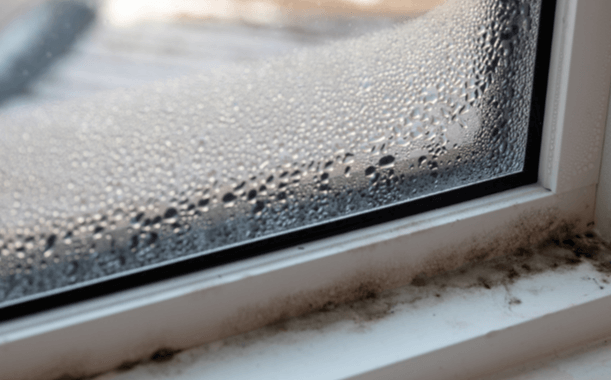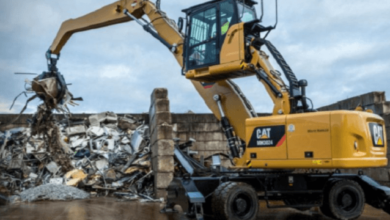Top Signs Your Home Needs Mold Remediation

Introduction
Mold is more than just an unsightly growth in your home; it’s a serious health hazard that can cause respiratory problems, allergic reactions, and even structural damage to your property. Unfortunately, mold can be elusive, growing in hidden places and only showing up when the problem has become severe. If you’re noticing unusual smells, spots, or health symptoms, it might be time to consider whether your home needs mold remediation. In this article, we’ll discuss the top signs that indicate your home may be harboring mold, the importance of early detection, and what steps to take if you discover a mold problem.
Understanding Mold and Its Dangers
Before diving into the signs of mold, it’s essential to understand what mold is and why it’s dangerous. Mold is a type of fungus that thrives in moist, warm environments. It spreads through tiny spores that are invisible to the naked eye and can travel through the air. Once these spores find a damp spot in your home, they can start to grow and multiply, creating colonies that are often difficult to eradicate.
Mold exposure can lead to a range of health problems, particularly for people with allergies, asthma, or weakened immune systems. Common symptoms include coughing, sneezing, itchy eyes, and skin rashes. In more severe cases, mold exposure can lead to chronic respiratory issues, headaches, and even memory loss. Additionally, mold can cause significant damage to your home, weakening walls, ceilings, and floors, and potentially reducing your property’s value.
The Musty Odor: A Tell-Tale Sign
One of the first and most common signs of mold in your home is a persistent musty odor. This smell is often described as earthy or damp, similar to the scent of wet leaves or old books. The musty odor is caused by the release of microbial volatile organic compounds (MVOCs) as mold grows. These compounds are a byproduct of the mold’s metabolism and are often the first detectable sign of a hidden mold problem.
If you notice a musty smell that lingers in your home, especially in areas like the basement, bathroom, or attic, it’s essential to investigate further. The odor alone is not proof of mold, but it strongly suggests that mold could be present, particularly if the smell is persistent and you can’t identify the source.
Visible Mold Growth: Don’t Ignore What You See
Seeing mold on surfaces in your home is an obvious sign that you need mold remediation. Mold can appear in various colors, including black, green, white, and orange. It often looks like a fuzzy or slimy spot that can spread quickly if not addressed.
Common places where mold is visible include:
- Bathrooms: Around bathtubs, showers, and sinks
- Kitchens: Under sinks and around leaky appliances
- Basements: On walls, floors, and ceilings
- Attics: On roof beams and insulation
- Windowsills: Especially in homes with poor ventilation
Even if the mold growth seems small, it’s crucial to address it immediately. What appears on the surface could be just the tip of the iceberg, with a much larger colony growing behind walls or under floors.
Water Damage: A Precursor to Mold
Water damage in your home is a significant risk factor for mold growth. Mold thrives in damp environments, and any area that has been exposed to water—whether from a leak, flood, or high humidity—can become a breeding ground for mold.
Signs of water damage to look for include:
- Stains on walls or ceilings: These may appear as yellowish-brown spots or streaks.
- Peeling or bubbling paint: Moisture trapped behind paint can cause it to lose adhesion.
- Warped floors: Wood and laminate flooring can warp or buckle when exposed to water.
- Condensation: Persistent condensation on windows or walls can indicate high humidity levels, which can lead to mold growth.
If you’ve experienced any kind of water damage in your home, it’s important to dry out the area as quickly as possible and monitor it for signs of mold. Even if the water damage seems minor, it can lead to significant mold problems if not addressed promptly.
Health Symptoms: When Your Body Reacts
Your body might be the first to signal that there’s a mold problem in your home. Exposure to mold can cause a range of symptoms, especially if you’re allergic to mold spores or have respiratory issues. Some common symptoms include:
- Persistent coughing or sneezing
- Runny or stuffy nose
- Red, itchy, or watery eyes
- Throat irritation
- Skin rashes or hives
- Headaches
In more severe cases, individuals may experience asthma attacks, difficulty breathing, or even lung infections. If you or a family member start experiencing these symptoms, especially if they improve when you leave the house, it’s worth considering the possibility of mold exposure.
High Humidity Levels: A Hidden Threat
High humidity levels in your home can create an environment where mold thrives. Mold typically grows when indoor humidity exceeds 60%. You might not always see or smell mold, but if the humidity is consistently high, it’s only a matter of time before mold begins to develop.
To monitor humidity levels, consider using a hygrometer, a device that measures the amount of moisture in the air. If you notice that the humidity is consistently high, especially in areas like the bathroom, kitchen, or basement, it’s crucial to take steps to reduce it. This can include using dehumidifiers, ensuring proper ventilation, and fixing any leaks.
Leaky Pipes and Roofs: A Gateway for Mold
Leaks in your plumbing or roof can create the perfect conditions for mold growth. Even a small, slow leak can result in significant mold issues over time. Mold often begins to grow unnoticed behind walls, under floors, or in attics, where it can spread extensively before being detected.
Common signs of leaks include:
- Dripping sounds: Especially in walls or ceilings
- Water stains: On walls, ceilings, or under sinks
- Soft or spongy walls: Indicating water saturation
- Increased water bills: Unexplained spikes can indicate a hidden leak
If you suspect a leak, it’s important to address it immediately and inspect the area for mold. Mold remediation may be necessary if the leak has been ongoing for some time.
Peeling Wallpaper and Bubbling Paint: Signs of Moisture and Mold
Peeling wallpaper or bubbling paint can be more than just a cosmetic issue; it can be a sign of moisture trapped behind the walls, which often leads to mold growth. As moisture accumulates, it causes the wallpaper or paint to lose its adhesion, leading to peeling, bubbling, or even cracking.
If you notice these signs, it’s essential to check behind the wallpaper or paint for any signs of mold. Mold can grow on the back of wallpaper or on the wall itself, spreading unseen until it becomes a significant problem.
Warped Walls and Floors: Structural Red Flags
Warped walls and floors are serious indicators that there’s a moisture problem in your home, which often goes hand in hand with mold growth. Wood, drywall, and other building materials can absorb moisture, causing them to expand, warp, or buckle. This not only affects the appearance and structural integrity of your home but also creates an ideal environment for mold to thrive.
If you notice that your walls are bowing or your floors are uneven, it’s important to investigate the cause. Whether it’s a leak, high humidity, or another moisture issue, addressing the underlying problem is crucial to prevent mold from taking hold.
Past Flooding: A High Risk Factor
Homes that have experienced flooding are at high risk for mold growth. Even if the floodwaters have receded and the area has been dried out, mold spores can remain and start growing when conditions are right. Mold can develop within 24 to 48 hours of flooding, making it essential to act quickly in the aftermath.
Signs that mold might be developing after a flood include:
- Lingering musty odors
- Discoloration of walls, floors, or ceilings
- Health symptoms such as coughing or sneezing
If your home has flooded, it’s advisable to have a professional mold inspection and consider mold remediation services to ensure that any mold is thoroughly removed.
Condensation: A Silent Mold Producer
Condensation occurs when warm, moist air comes into contact with a cold surface, such as a window or wall. This moisture can accumulate and create an ideal environment for mold growth, particularly if the condensation is persistent.
Common areas where condensation occurs include:
- Windows: Especially in winter when there’s a significant temperature difference between inside and outside
- Walls: Particularly in bathrooms or kitchens
- Pipes: Cold water pipes can develop condensation, especially in humid environments
To prevent condensation-related mold growth, it’s important to ensure proper ventilation, use dehumidifiers, and insulate cold surfaces where possible.
HVAC Systems: A Hidden Source of Mold
Your heating, ventilation, and air conditioning (HVAC) system can also be a source of mold in your home. Mold can grow in the ducts, filters, and other components of your HVAC system, especially if there’s moisture buildup due to condensation or leaks. When the system is running, it can spread mold spores throughout your home, affecting indoor air quality and potentially causing health issues.
Signs that your HVAC system might be harboring mold include:
- Musty odors when the system is running
- Visible mold around vents or ducts
- Frequent respiratory issues or allergies
Regular maintenance and inspection of your HVAC system are essential to prevent mold growth. If mold is found, professional remediation may be necessary to clean and sanitize the system.
Unexplained Allergies or Respiratory Issues
If you or your family members are experiencing unexplained allergies or respiratory issues, mold could be the culprit. Mold spores can trigger allergic reactions, asthma attacks, and other respiratory problems, particularly in individuals who are sensitive to mold. Symptoms may include:
- Frequent sneezing or coughing
- Runny or stuffy nose
- Wheezing or difficulty breathing
- Itchy or watery eyes
These symptoms may worsen in certain areas of the home or during specific times of the year when mold is more likely to grow. If you suspect mold is causing health issues, it’s important to address the problem promptly to prevent further complications.
Past Mold Problems: History Repeats Itself
If your home has had mold problems in the past, there’s a higher likelihood that mold could return, especially if the underlying moisture issues weren’t fully resolved. Mold spores can remain dormant for long periods and start growing again when conditions are right.
Regularly inspecting areas where mold was previously found and addressing any moisture issues promptly can help prevent a recurrence. If mold does return, it’s important to act quickly and consider professional remediation to ensure that it’s thoroughly eliminated.
Testing for Mold: When and How to Do It
If you suspect that mold is present in your home but can’t see it, mold testing might be necessary. Testing can help identify the type of mold and the extent of contamination, guiding the remediation process.
There are several methods for testing mold, including:
- Air testing: Collecting and analyzing air samples to detect mold spores.
- Surface testing: Swabbing or tape-lifting samples from surfaces where mold might be present.
- Bulk testing: Collecting pieces of material from your home and analyzing them for mold.
Professional mold inspectors can provide a comprehensive assessment and recommend the best course of action. While DIY testing kits are available, professional testing is generally more accurate and reliable.
When to Call a Professional Mold Remediation Service
Not all mold problems can be handled with DIY solutions. If the mold is widespread, in hard-to-reach areas, or if you’re experiencing significant health symptoms, it’s best to call a professional mold remediation service. Professionals have the tools, expertise, and experience to safely and effectively remove mold, repair any damage, and prevent future growth.
Signs that you need professional help include:
- Extensive mold growth covering large areas
- Mold in difficult-to-access places like inside walls or under floors
- Recurring mold problems despite previous attempts to clean it
- Serious health symptoms that may be linked to mold exposure
Professional remediation can save you time, money, and stress, ensuring that your home is safe and mold-free.
FAQs
What is the difference between mold and mildew? Mold and mildew are both types of fungi, but mildew is typically lighter in color, often white or gray, and tends to grow on surfaces like shower walls or windowsills. Mold is usually darker and can penetrate deeper into building materials, making it more difficult to remove.
How can I prevent mold in my home? To prevent mold, control moisture by fixing leaks promptly, using dehumidifiers, ensuring proper ventilation, and regularly cleaning areas prone to mold, such as bathrooms and kitchens.
Can I clean mold myself? Small areas of mold (less than 10 square feet) can often be cleaned with household products like soap and water or vinegar. However, for larger infestations or if you have health concerns, it’s best to call a professional.
Is mold covered by homeowners’ insurance? It depends on the cause of the mold. If the mold is the result of a covered peril, such as a burst pipe, your homeowners’ insurance may cover the cost of mold remediation. However, mold due to neglect or ongoing moisture issues is typically not covered.
How long does it take for mold to grow after water damage? Mold can start to grow within 24 to 48 hours after water damage occurs. It’s crucial to dry out affected areas as quickly as possible to prevent mold growth.
Can mold cause long-term health problems? Yes, prolonged exposure to mold can lead to chronic respiratory issues, neurological problems, and in severe cases, permanent lung damage. It’s important to address mold problems promptly to protect your health.
Conclusion
Mold is a serious issue that requires immediate attention to protect both your health and your home. By recognizing the signs of mold, such as musty odors, visible growth, water damage, and health symptoms, you can take the necessary steps to address the problem before it becomes severe. Whether you handle the situation yourself or call in professional mold remediation services, the key is to act quickly and thoroughly to ensure that your home remains a safe and healthy environment.





